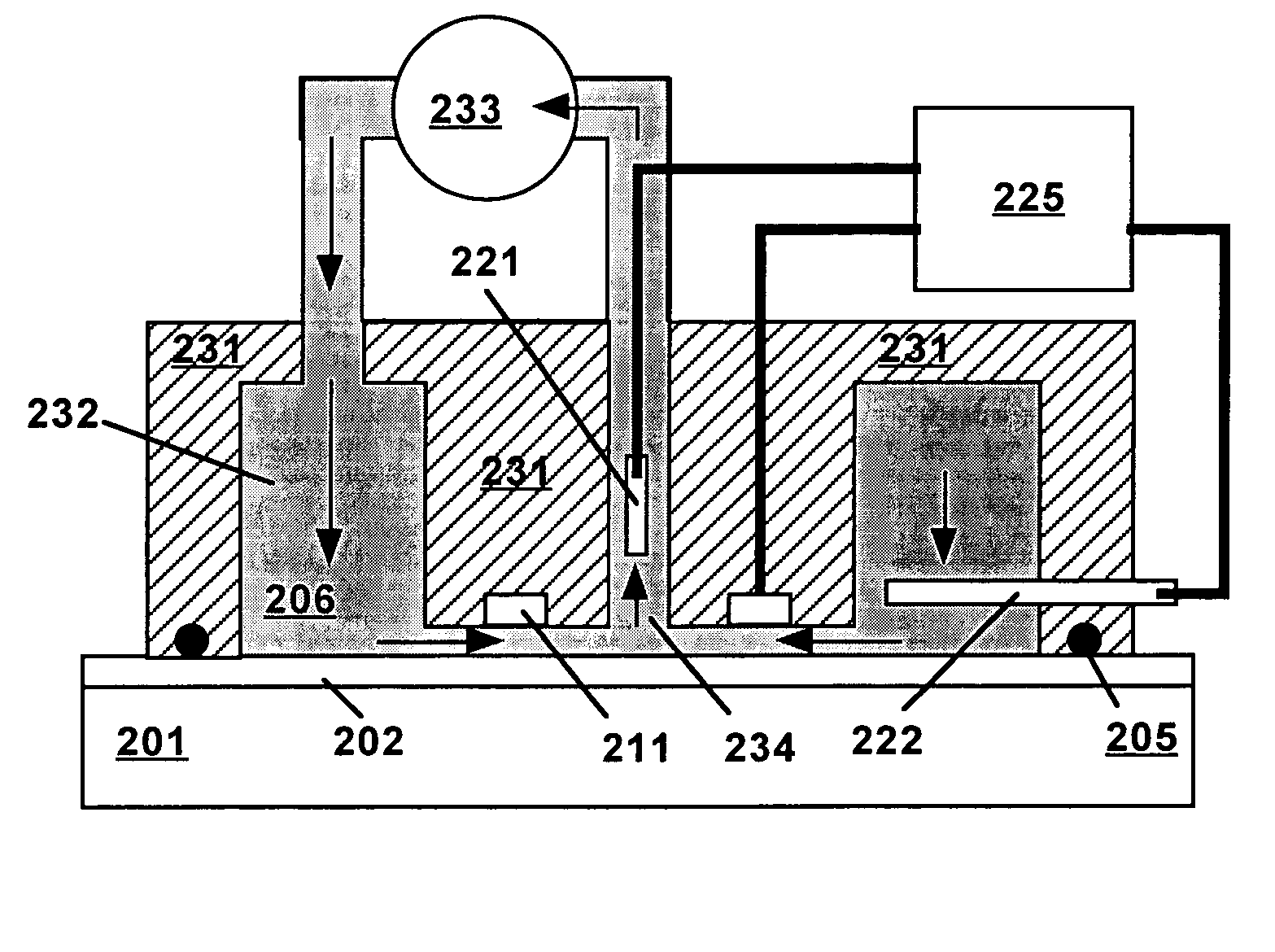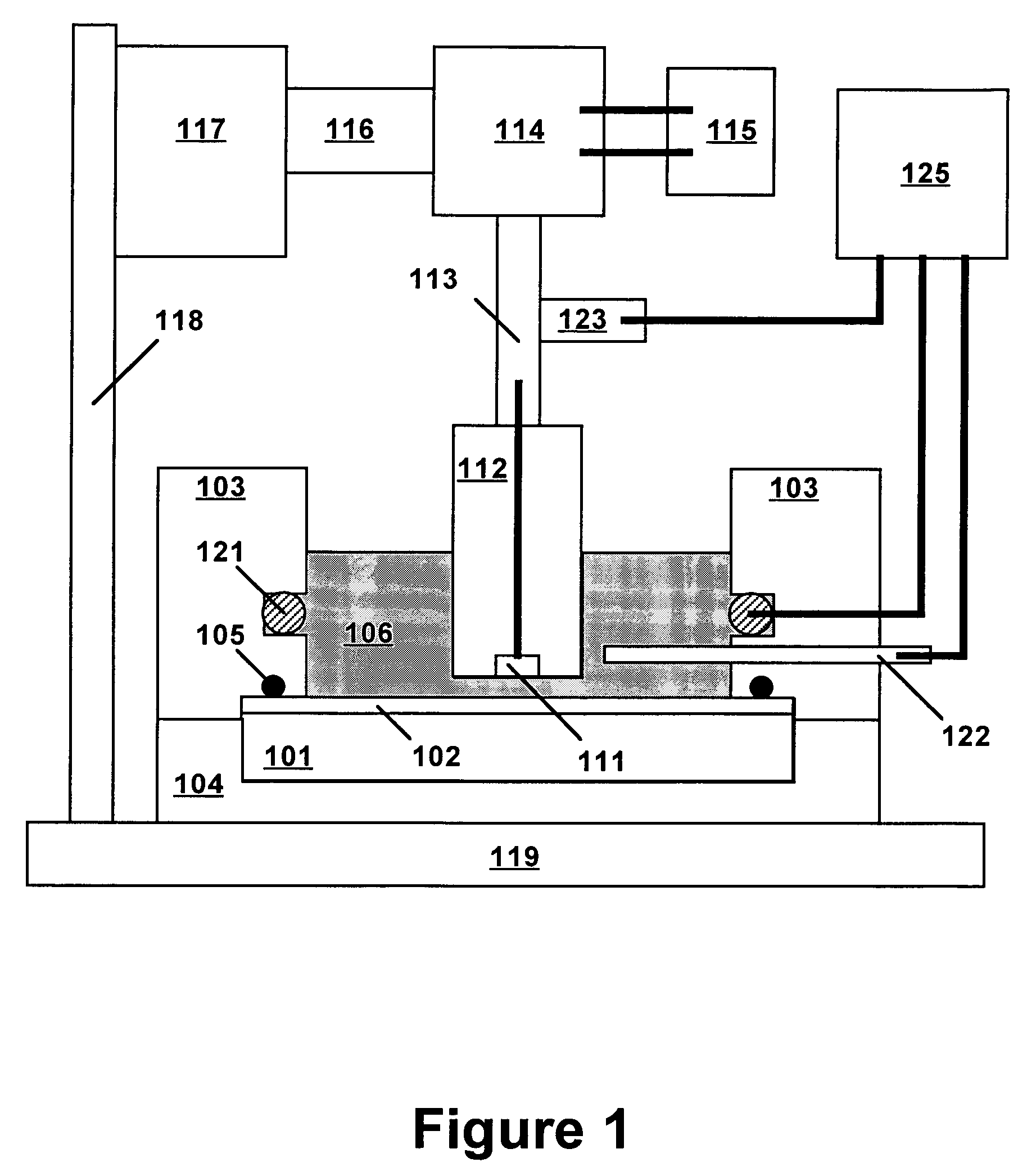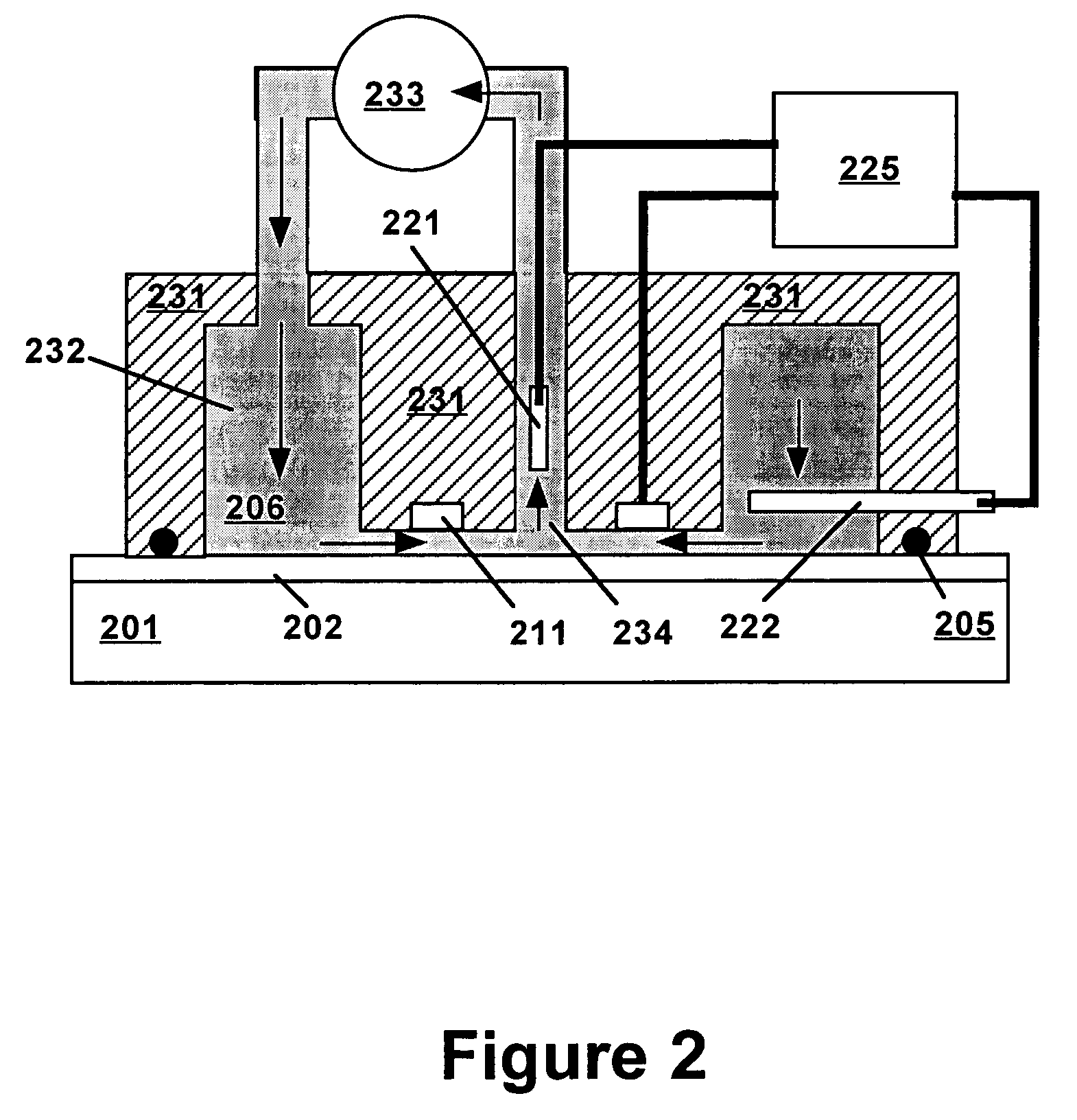Evaluation of the corrosion inhibiting activity of a coating
a technology of corrosion inhibition and coating, which is applied in the field of corrosion inhibition, can solve the problems of reducing the corrosion resistance of the alloy, and reducing the extent of corrosion protection provided by the coating, so as to reduce the cost, reduce the cost, and reduce the cos
- Summary
- Abstract
- Description
- Claims
- Application Information
AI Technical Summary
Benefits of technology
Problems solved by technology
Method used
Image
Examples
Embodiment Construction
[0019]Technical terms used in this document are generally known to those skilled in the art. Electrochemical measurements are usually performed in a “cell” containing an electrolytic solution (or “electrolyte”) and at least two electrodes. Electroanalytical measurements are typically made by applying a voltage between a “working electrode” (also termed “indicator electrode”) and a “counter electrode” and measuring the resulting current and the potential of the working electrode relative to a “reference electrode”. The term “electrode potential”, or simply “potential”, refers to the voltage occurring across a single electrode-electrolyte interface.
[0020]A “potentiostat” is an electronic device for controlling the potential of a working electrode by passing current between the working electrode and the counter electrode so as to drive the working electrode to a desired potential relative to the reference electrode. Use of a potentiostat avoids passing appreciable current through the r...
PUM
| Property | Measurement | Unit |
|---|---|---|
| distance | aaaaa | aaaaa |
| diameter | aaaaa | aaaaa |
| diameter | aaaaa | aaaaa |
Abstract
Description
Claims
Application Information
 Login to View More
Login to View More - R&D
- Intellectual Property
- Life Sciences
- Materials
- Tech Scout
- Unparalleled Data Quality
- Higher Quality Content
- 60% Fewer Hallucinations
Browse by: Latest US Patents, China's latest patents, Technical Efficacy Thesaurus, Application Domain, Technology Topic, Popular Technical Reports.
© 2025 PatSnap. All rights reserved.Legal|Privacy policy|Modern Slavery Act Transparency Statement|Sitemap|About US| Contact US: help@patsnap.com



